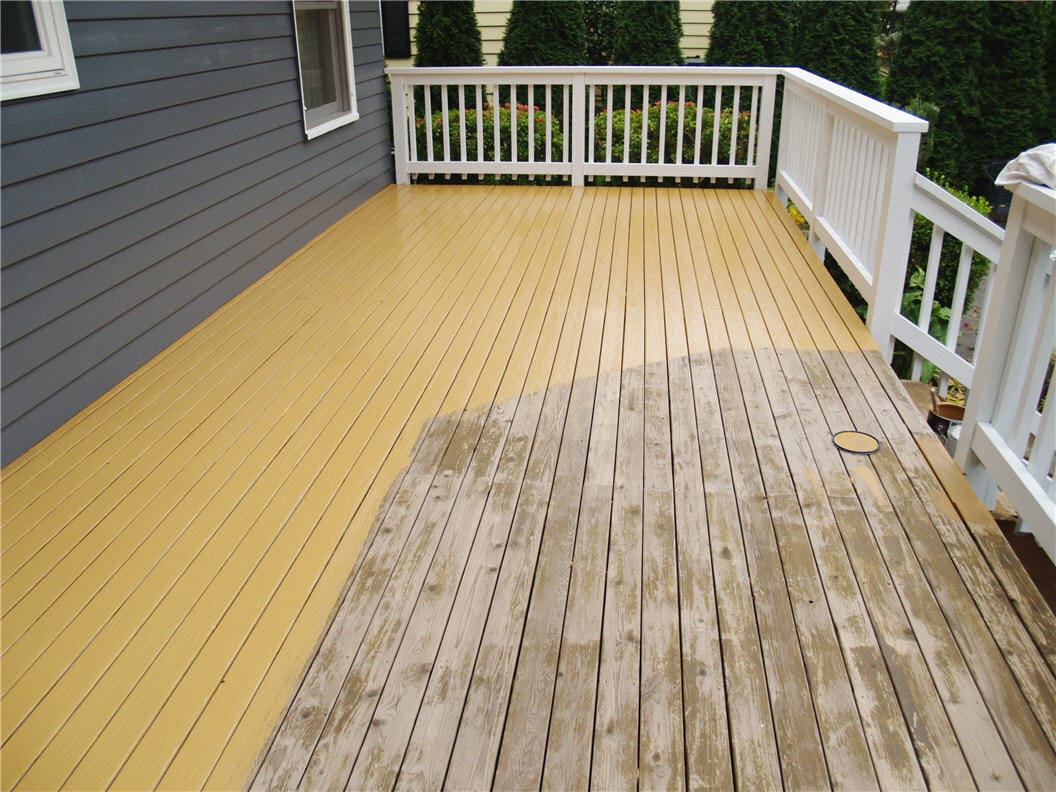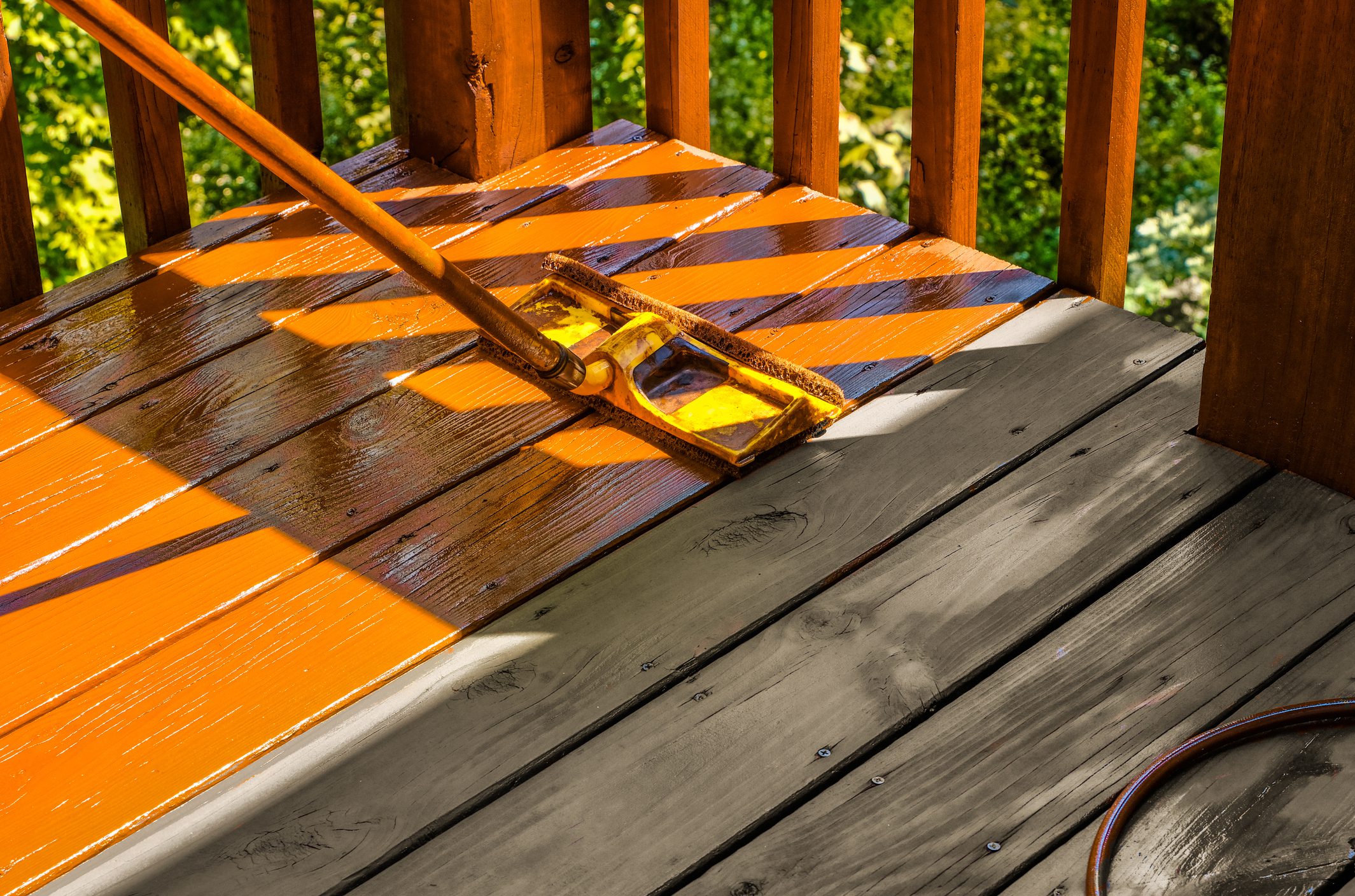Choosing the Right Spot for Your Fence: Tips and Factors To Consider
When it comes to keeping and improving the appearance of your fence, selecting the ideal tarnish is essential. We will certainly explore the various types of fence spots, factors to consider before picking a stain, ideas for preparing your fencing for staining, and the differences in between oil-based and water-based discolorations. Furthermore, we will dive right into picking the ideal tarnish shade to complement your fencing and enhance your exterior space.
Recognizing Different Kinds of Fencing Discolorations

On the various other hand, water-based spots are made from acrylic or latex and supply a more refined shade to the timber. They develop a protective film externally of the wood, avoiding wetness from seeping in and securing versus UV damages. Water-based stains are simpler to tidy up and have a faster drying time contrasted to oil-based discolorations. They are additionally much less most likely to discolor or split in time.
Choosing in between water-based and oil-based discolorations relies on various elements, including personal choice, the preferred appearance, and the level of maintenance required. Oil-based spots are advised for fence high-traffic locations or those regularly exposed to extreme weather condition conditions. fence staining. Water-based discolorations, on the various other hand, are a preferred selection for surround domestic areas where look and simplicity of use are essential
Recognizing the distinctions between oil-based and water-based discolorations aids home owners make a notified decision when selecting the appropriate discolor for their fence. Thinking about the specific demands of the fence, such as its location, direct exposure to sunlight, and wanted aesthetic, will certainly make sure that the chosen tarnish provides lasting defense and improves the total charm of the fence.
Aspects to Consider Prior To Choosing a Stain

Another variable to take into consideration is the type of timber your fencing is made from. Different kinds of wood take in spots in different ways, leading to varying degrees of color intensity and sturdiness. Softwoods like ache may call for even more constant staining contrasted to hardwoods like cedar or redwood. Furthermore, certain timbers may be extra susceptible to concerns like rot or insect infestation, which might affect the selection of stain to preserve the fence and shield.
The environment and climate condition in your location should additionally be taken into account. You may require a tarnish that provides added defense versus dampness and UV rays if you live in a location with extreme winters months or high moisture. Furthermore, if your fencing is revealed to guide sunshine for long durations, a tarnish with UV inhibitors can assist stop fading and discoloration.
Last but not least, it's essential to consider your preferred aesthetic. Different discolorations provide different colors and coatings, permitting you to tailor the appearance of your fencing (fence staining and sealing). Take into consideration the total design and style of your residential or commercial property, as well as any kind of neighborhood policies or homeowner organization standards that may determine the acceptable stain shades
Tips for Preparing Your Fencing for Discoloration
To prepare your fence for discoloration, start by extensively cleansing the surface area utilizing a moderate cleaning agent and a pressure washing machine or scrub brush. Cleaning up the fence is an important action as it eliminates dirt, crud, and any previous coverings that may hinder the staining procedure. Begin by moistening the fence with water and after that apply a mild cleaning agent utilizing a scrub brush or a stress washer with a low-pressure setup. Scrub the surface area gently, paying added attention to areas with persistent stains or mold and mildew. Rinse the fencing thoroughly with clean water to get rid of all traces of detergent.
After cleansing, enable the fencing to dry totally. fence staining. This action is crucial as staining a moist or wet surface can cause bad attachment and an uneven surface. Relying on the weather, it might take anywhere from a couple of hours to a couple of days for the fencing to completely dry completely. Ensure that the fence is entirely dry prior to waging the staining procedure.
Prior to staining, evaluate the fencing for any problems, such as loose boards or nails. Fix any issues to make sure that the fence is structurally audio. Additionally, think about applying a wood conditioner or brightener to the surface area. This item helps to open the wood pores, permitting the tarnish to penetrate better and equally.

Comparing Water-Based and oil-based Stains
When choosing a stain for your fence, it is necessary to contrast the qualities and benefits of oil-based and water-based stains. Both kinds of spots have their own benefits and factors to consider, so it is essential to understand the differences in between them.
Oil-based spots are understood for their longevity and resistance to put on and tear. In addition, oil-based stains have a tendency to last longer than water-based spots, making them a prominent option for fences.
On the other hand, Continue water-based discolorations are a lot more eco-friendly and less complicated to tidy up. They have a reduced VOC (unpredictable natural substance) content, which means they release less hazardous fumes right into the air. Water-based discolorations additionally completely dry faster, enabling a quicker application and much less downtime. Nonetheless, they may not provide the same level of security as oil-based stains, especially in harsh climate conditions.
Eventually, the choice in between water-based and oil-based spots depends upon your specific requirements and preferences. Think about factors such as toughness, ecological impact, and simplicity of application when making your decision. Consulting with a specialist or seeking recommendations from specialists can also assist ensure that you choose the appropriate stain for your fence.
Choosing the Right Discoloration Color for Your Fencing
The option of an appropriate tarnish color for your fence is an essential aspect of improving its visual appeal and matching the total design of your outside space (fence cleaning). The right discolor shade can transform a plain, regular fencing right into a striking prime focus that includes deepness and character to your residential property
When choosing a tarnish color for your fencing, it is necessary to take into consideration the style and style of your home. If you have a standard or classic style home, natural tones such as browns and neutrals can develop a cozy and welcoming look. On the various other hand, if you have a modern or modern home, you may think about selecting vibrant and lively colors that make a declaration.
Another factor to take into consideration is the natural environments of your property. If you have a great deal of greenery, a tarnish color that enhances the all-natural landscape, such as eco-friendlies or crimsons, can create a natural and harmonious look.
In addition, it deserves considering the upkeep required for various stain shades. Lighter shades often tend to show dirt and put on even more conveniently, while darker colors can conceal flaws and need much less constant touch-ups.
Ultimately, the choice of tarnish shade for your fencing need to mirror your individual design and preferences - fence staining companies. Make the effort to discover various alternatives and speak with with specialists if required, to make certain that you pick the excellent stain shade that enhances the beauty and appeal of your fence
Conclusion
To conclude, when it involves choosing the ideal tarnish for your fencing, it is necessary to understand the different types of stains readily available and consider variables such as resilience and preferred look. Preparing the fencing properly prior to discoloration is critical for achieving optimal results. In addition, contrasting water-based and oil-based discolorations can help figure out the very best alternative for your details needs. Selecting the right discolor shade can boost the total looks of your fence.
We will certainly check out the different types of fencing stains, aspects to think about before picking a discolor, ideas for preparing your fence for discoloration, and the differences in between oil-based and water-based spots.Separating in between water-based and oil-based discolorations is vital when understanding different kinds of fencing discolorations. Water-based stains are simpler to clean up and have a quicker drying out time contrasted to oil-based spots. Furthermore, oil-based discolorations often tend to last longer than water-based discolorations, making them a prominent option for fencings.
In verdict, when it comes to picking the best tarnish for your fence, it is crucial to understand the various types of stains available and consider variables such as resilience and desired appearance.